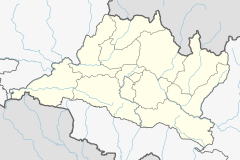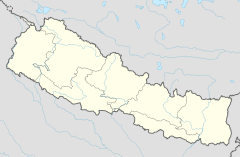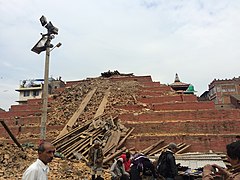| Maju Dega | |
|---|---|
 Maju Dega in 2012 | |
| Religion | |
| Affiliation | Hinduism |
| District | Kathmandu District |
| Province | Bagmati Province |
| Location | |
| Location | Kathmandu Durbar Square |
| Country | Nepal |
| Geographic coordinates | 27°42′15″N85°18′22″E / 27.704269627380505°N 85.30618376650536°E |
| Architecture | |
| Creator | Riddhi Lakshmi Rajesvari Devi |
| Date established | 1692 |
Maju Dega is a Hindu temple dedicated to Shiva and it is located in Kathmandu Durbar Square, Nepal. [1] [2]
The temple was built by Riddhi Lakshmi, the Queen mother of Bhupetendra Malla in 1692. [3] [4] 1971 Indian film Haré Rama Haré Krishna was filmed on premises of the temple. [3] The April 2015 Nepal earthquake completely destroyed the temple and it was being rebuilt in 2018. [4] [5]





